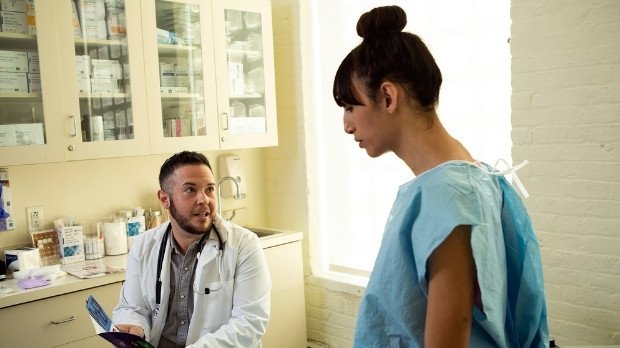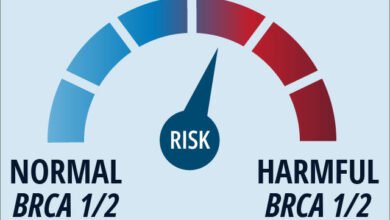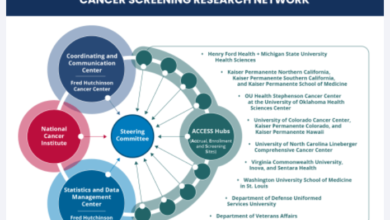Cancer Research UK – Science blog

No matter our gender, income, race or sexuality, we’re all made up of cells. And, because we’re all made up of cells, we can all develop cancer.
Everyone’s individual cancer risk might be slightly different, but the risk itself is part of what makes us human.
Health inequalities skew that. They mean some of us are exposed to more risk factors for developing cancer. Others get more of the care and attention needed to prevent and treat it.
That causes a particular problem for the LGBTQ+ community. Inequalities can increase their cancer risk and shape their experience of everything from screening and treatment to end of life care.
Slowly but surely, charities, research institutes and health providers across the UK are changing that. Read on to find out how.
Interested in hearing direct from the experts?
The next episode of That Cancer Conversation is all about improving cancer care and cancer research for LGBTQ+ patients.
Subscribe now – on Apple Podcasts, Spotify or wherever you get your podcasts – to hear it first!
Training doctors in inclusive cancer care
The LGBTQ+ cancer charity Live Through This provides webinars to help healthcare professionals understand the needs of LGBTQ+ patients. They’re also developing a new course in inclusive cancer care with Guy’s Cancer Academy.
We’re excited about that. Doctors want to provide the best care for all their patients. But they might not always know how to offer it. A 2019 study found that, while most non-surgical cancer doctors feel comfortable treating LGBTQ+ patients, very few of them routinely ask about sexual orientation (5%), gender identity (3%) and preferred pronoun use (2%).
In other words, comfortable doctors don’t equal comfortable patients.
“While these doctors felt that they were treating everyone equally, they weren’t necessarily treating them equitably, and catering to their needs specifically,” explains lead author Dr Alison Berner, a cancer doctor (oncologist) who also specialises in adult gender identity medicine.
Equality and equity
- Equality is treating everyone the same. In other words, it means giving each person the same resources or opportunities, without considering what they start off with.
- Equity recognises that each person has different circumstances. It means giving everyone the resources and opportunities they need to reach an equal outcome.
With better training, more cancer doctors will be able to create an inclusive environment for LGBTQ+ patients, and to get a clearer picture about their individual healthcare needs.
In a study earlier this year, researchers asked seriously ill LGBTQ+ people and their significant others about how their interactions with clinicians could be improved. That led to 9 recommendations healthcare professionals can use to communicate inclusively.
A few simple changes can make a big difference.
By asking all patients standard questions about sexual orientation and gender, for instance, doctors and nurses can ensure LGBTQ+ people don’t feel like they are being singled out. Neutral language that doesn’t make assumptions about identity could also help to make a positive first impression, and healthcare workers can take that further by echoing the language used by patients and their significant others.
“Let’s not underestimate the benefit of saying, ‘who have you brought with you today?’ and not assuming it’s their sister,” adds Berner. “It might actually be their partner, and then you’ve immediately broken trust, and that person may not then tell you something else that’s wrong with them.”
Specialist cancer care for trans people
Trust counts for a lot when we’re trying to beat cancer.
Some US studies have suggested there might be associations between discrimination towards transgender and gender diverse people in healthcare and increased tobacco use.
Other cancer risk factors are more common in transgender and gender diverse people than the general population, too.
According to a recent study using UK primary care data, which Berner also worked on, alongside smoking, these include alcohol use, obesity, diabetes, and HIV and hepatitis infections. The researchers suspect that this is linked to the higher levels of stigma and discrimination faced by the trans and gender diverse community.
Solving those issues requires wider societal change, but cancer won’t wait. It’s happening to individual people today. We can start by improving how we look after them.
One new scheme, the UK Cancer and Transition Service (UCATS), provides individual care and clinical advice for transgender, non-binary and gender diverse people affected by cancer. Doctors can refer patients to the service whenever they feel it’s relevant. It’s also open for people to refer themselves.
UCATS brings together oncologists with doctors that specialise in gender-affirming care.
Gender-affirming care, treatments and interventions help trans and gender diverse people live a life matching their gender identity.
That’s important because the hormone treatments that help some people medically transition can change how cancers grow and develop. Cancer treatments can also interfere with how gender-affirming hormones work, or cause issues with gender-affirming surgeries.
Why personalising care matters for LGBTQ+ cancer patients
That might sound complex. It is. But it’s no different from the rest of cancer care. There’s no one-size-fits-all rule. The best care matches people’s needs.
In some cases, that might involve CAR T-cell therapy, where doctors modify cells from a patient’s own body to create a unique treatment for their cancer. With UCATS, it means putting together teams that can understand the full breadth of a trans person’s experience.
“We can get all the clinicians in the room with the patient to talk about the impact of the different treatments on one another, come to a consensus and decide a way forward,” explains Berner.
It’s hardly unusual to bring different experts together for a medical consultation, either. “You wouldn’t expect someone without sufficient English skills to make do in our health service without an interpreter,” Berner adds. “A small addition like that can make everything more equitable.”
All those examples are steps towards beating cancer for everyone. By addressing the needs of minorities that might otherwise be overlooked, we make it easier to personalise care for everyone else, too.
Cervical screening for trans men
Currently, trans men aren’t automatically invited for cervical cancer screening. We’re expecting an update to the screening system to change this soon.
Beyond that, though, some trans men with cervixes might find cervical cancer screening or treatment more difficult because they don’t identify with that part of their bodies. Increased levels of testosterone in trans men can also make screening more uncomfortable.
As we’ve discussed previously, it doesn’t take a specialist to overcome those issues. Scheduling additional appointment time, offering muscle relaxants and using the right pronouns are all ways doctors and nurses can support transmasculine patients.
Berner is also launching a study looking at non-invasive ways of testing trans people for HPV, which could make the whole screening process much easier.
Similar steps could also help make cervical screening easier for cis women (whose gender matches the sex they were assigned at birth), too. Care that matches people’s needs, medical histories and identities is the best way to protect them from pain and discomfort. Ultimately, that’s what care is about.
Changing screening can save people stress and strain, and, in turn, prevent and cure more cancers.
The missing LGBTQ+ cancer data
As a research charity, we want to make sure our work represents and helps everyone.
Today, though, the UK’s cancer registries don’t routinely include data on people’s gender identity or sexual orientation. That contributes to one of the biggest health inequalities of all: some people’s problems simply aren’t visible.
“We don’t know if people’s outcomes are inferior because of sexual orientation or gender identity or trans status, because we simply don’t ask it,” says Berner. “There’s a saying: If you don’t count us, we don’t count.
“In terms of changing the face of LGBTQ+ cancer care, that data collection really needs to be the first step.”
Our data on the LGBTQ+ community is improving. The 2020 UK census was the first to ask about people’s sexual orientation and gender identity.
- More than 1.5m people identified as lesbian, gay, bisexual or ‘other’.
- And 262,000 people said their gender identity was different from the sex they were assigned at birth.
In January this year, the George Institute for Global Health, in partnership with Imperial College London, launched the MESSAGE (Medical Science Sex and Gender Equity) project. It’s working on policies and best practices that research funders like us can use to ensure all studies account for sex and gender.
Over the past decade, similar policies have made research more diverse, more relevant and more useful in the EU, the US and Canada.
It’s time the UK caught up. We can’t solve the problems we can’t see. Once they’re visible, we can all benefit from solving them.
“By focusing on all the minorities,” says Berner, “you get the majority.”
Tim
Source link
#Cancer #Research #Science #blog



